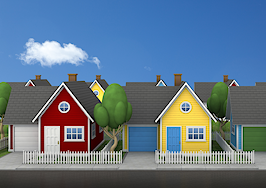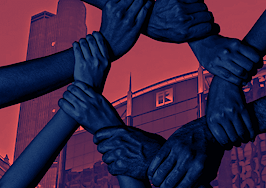The verdict is in — the old way of doing business is over. Join us at Inman Connect New York Jan. 23-25, when together we’ll conquer today’s market challenges and prepare for tomorrow’s opportunities. Defy the market and bet big on your future.
A lack of access to credit is creating barriers to homeownership for millions of people, especially Black families, according to new credit insecurity and rental/mortgage payments maps released on Monday by Zillow.
Access to safe, traditional credit building is often especially limited in Black neighborhoods, Zillow’s report noted, and as a result, Black households are often relegated to remaining renters, even if they are able to afford monthly mortgage payments. Unfortunately, rent payments also typically do not help build credit.
“Lack of credit access keeps people in a cycle of paying more in rent than they would pay each month for a mortgage on that same home,” Nicole Bachaud, senior economist at Zillow, said in a statement. “Communities of color, particularly Black families, see this play out, keeping a path to economic stability and wealth generation locked. Policymakers should take action to reasonably improve access to credit for millions of families.”
Neighborhoods with more credit insecurity tend to see lower homeownership rates, Zillow said, despite monthly mortgage payments in these areas often costing less than rent payments, showing that a lack of access to credit-building opportunities creates barriers to homeownership equal to the barriers created by affordability.

Credit: Zillow
Maps generated by Zillow show how areas of credit insecurity map onto areas where a greater proportion of the population is Black. Those areas are also where paying for rent is more expensive than paying monthly mortgage payments.
New Orleans shows this phenomenon most clearly, Zillow reported. In the city’s credit-insecure census tract, as designated by the Federal Reserve Bank of New York, the income-adjusted gap between the cost of a typical rental and a typical mortgage payment on a home is the widest out of other credit-insecure tracts in the U.S.
More than 50 percent of the population in the city’s credit-insecure areas is Black. The median renter household in these areas spends 77.5 percent of its income on a typical rental, but the median household that owns a home only spends 28.6 percent of its income on a mortgage payment. Therefore, residents in these credit-insecure areas are often unable to qualify for financing to purchase a home and are stuck spending significantly more of their income on rent.
Redlining, the practice by which residents in Black communities were denied mortgage loans because they lived in communities that were deemed risky for investment because of their demographic makeup, is outlawed today. However, the long-lasting impacts of redlining continue to negatively affect Black communities, Zillow noted, with households living in these credit-insecure areas still facing disparities in homeownership and financial opportunities.
Potential solutions to these issues include policymakers spearheading initiatives for financial institutions and landlords to report positive rent payments and government agencies to take into account this data to help renters build credit, Zillow noted. Spreading awareness about down payment assistance programs and supporting policies to increase homebuilding would also help create affordable homeownership opportunities for individuals living in credit-insecure areas.
The U.S. Department of Justice launched an initiative to combat redlining in October 2021, and has reached settlements with 10 lenders to date totaling more than $107 million. In announcing the latest settlement with Ameris Bank last month, Attorney General Merrick Garland said the Justice Department “currently has over two dozen active investigations into redlining, spanning neighborhoods across the country.”













